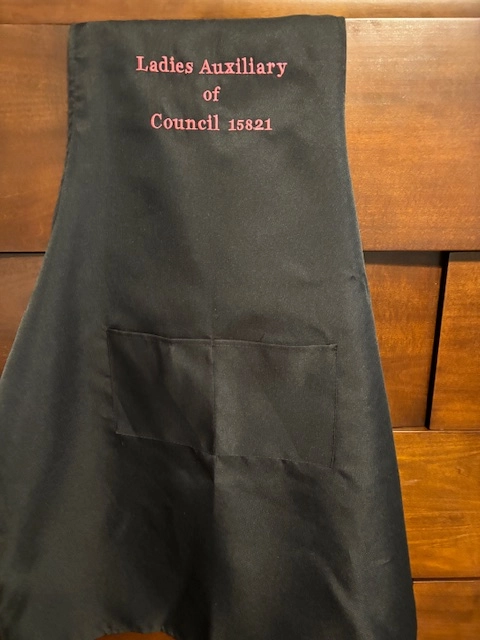Personalized Embroidery for All Your Demands - From School Uniforms to Sports Teams
Personalized Embroidery for All Your Demands - From School Uniforms to Sports Teams
Blog Article
The Art of Customized Embroidery: Unlocking the Tricks to Creating Special and Memorable Styles
The tricks to creating custom needlework designs that astound the eye and leave an enduring perception lie in a delicate equilibrium of strategy, creative thinking, and focus to detail. As we delve right into the globe of custom needlework, we discover the nuanced interplay in between thread choice, sew complexity, and layout personalization that elevates a plain garment to a job of art.
Selecting the Right Embroidery Threads
When choosing embroidery strings, what vital elements should you think about to make certain the most effective results for your custom-made layouts? The choice of embroidery thread is vital in identifying the last end result of your stitched design. One of the key considerations is the product of the string. Various products such as cotton, polyester, rayon, and silk offer varying degrees of luster, sturdiness, and appearance. It is vital to pick a string product that complements the fabric you are embroidering on and lines up with the wanted appearance of the design.
Thicker threads can add dimension and structure to your design, while finer strings are ideal for intricate details and little message. In addition, taking into consideration the shade fastness and washability of the thread is critical to guarantee that your customized designs keep their top quality and vibrancy over time.
Checking Out Different Stitch Techniques
To explore the world of 'Checking out Different Stitch Strategies', one need to understand the details and subtleties that each stitching method offers the art of embroidery. Different stitch strategies not just add aesthetic interest however also add to the total appearance and dimension of the style. One popular stitch method is the satin stitch, which includes carefully stuffed parallel stitches to produce a smooth and glossy surface area, ideal for loading in shapes and producing bold lays out.
On the other hand, the backstitch is a versatile technique often made use of for describing and including fine information. It entails stitching in reverse to create a strong line of embroidery. Additionally, the French knot stitch includes a responsive aspect to layouts, ideal for creating distinctive accents like blossom centers or ornamental touches.
Exploring different stitch methods enables embroiderers to have fun with light, shadow, and deepness within their layouts, elevating the visual allure and imaginative quality of their needlework projects. By grasping numerous sewing approaches, one can unlock countless possibilities for producing unique and memorable custom-made needlework pieces.
Incorporating Personalized Design Aspects
Having explored the ins and outs of various stitch techniques such as the satin stitch, backstitch, and French knot, the emphasis currently changes in the direction of incorporating customized design components in custom embroidery projects. Individualized style aspects play an essential role in making needlework projects truly distinct and memorable. One way to incorporate personalization is by including initials, names, or substantial days to the layout. This not just includes go to this site a personalized touch however additionally enhances the sentimental worth of the needlework item.
Another means to incorporate individualized design components is by including symbols or themes that hold special significance to the recipient or reflect their passions and individuality. As an example, incorporating a favored blossom, animal, or hobby-related symbol can make the needlework design extra meaningful and individualized. Furthermore, choosing colors that reverberate with the recipient or align with the designated motif can further improve the customization of the needlework job.
Understanding the Art of Shade Coordination

One secret facet of color sychronisation is comprehending shade theory. This includes recognizing how different shades communicate with each various other, the feelings they convey, and just how they can be combined to create aesthetically attractive layouts. By using color theory concepts, embroiderers can develop unified shade palettes that improve the general appearance of the design.
In addition, focusing on comparison is crucial in color sychronisation. Making use of contrasting shades can help specific components of the layout pop, improve legibility, and create an aesthetically dynamic embroidery piece. By grasping the art of shade coordination, embroiderers can boost their designs and create memorable items that reverberate with customers and viewers alike.
Enhancing Appearance With Advanced Needlework Stitches
French knots, as an example, are excellent for including small, increased dots to your style, resembling the appearance of beads or creating a textured surface area. Bullion knots, on the various other hand, can be used to create twisted, ropelike elements that add a lavish feel to the embroidery. Seed stitching involves tiny, scattered stitches that can complete areas with a multicolor structure, while turkey job creates fluffy, dimensional accents reminiscent of animal fur or vegetation. Try out these advanced needlework stitches permits you to press the borders of typical needlework and create genuinely special and aesthetically attractive textures in your layouts.
Conclusion
To conclude, the art of customized needlework involves a mix of picking the appropriate threads, discovering different stitch techniques, including tailored style elements, understanding shade sychronisation, and enhancing appearance with sophisticated stitches. By understanding and applying these crucial aspects, embroiderers can produce unique and unforgettable designs that display their creativity and ability. Needlework fanatics can open the secrets to producing gorgeous and custom pieces that stick out and leave a long lasting impression.
Report this page